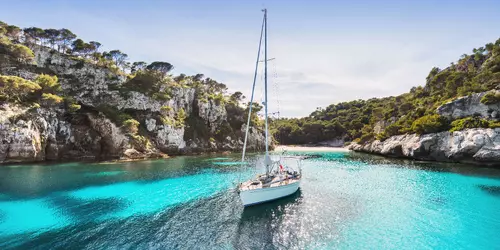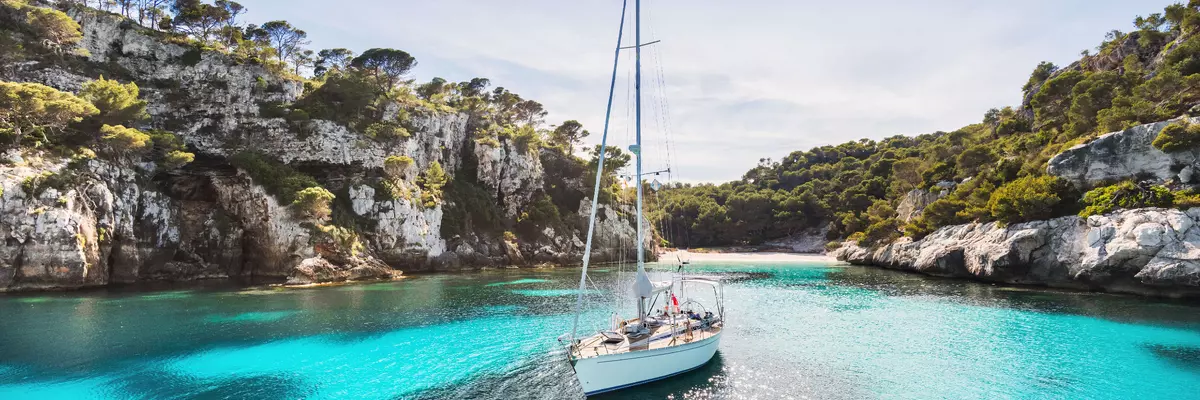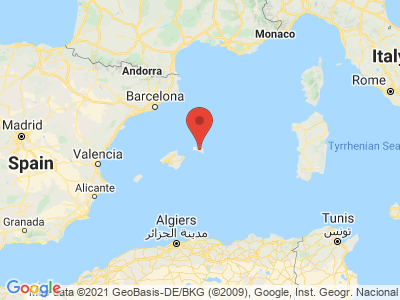Climate Table Menorca
Jan | Feb | Mar | Apr | May | Jun | Jul | Aug | Sep | Oct | Nov | Dec | |
|---|---|---|---|---|---|---|---|---|---|---|---|---|
| Max. Temperature | 14° | 14° | 16° | 18° | 21° | 25° | 28° | 28° | 26° | 22° | 18° | 14° |
| Min. Temperature | 7° | 7° | 9° | 11° | 13° | 17° | 20° | 20° | 19° | 15° | 11° | 9° |
| Sun Hours | 5 | 5 | 6 | 8 | 10 | 10 | 12 | 10 | 8 | 6 | 5 | 4 |
| Water Temperature | 14° | 13° | 14° | 14° | 17° | 20° | 23° | 25° | 23° | 21° | 18° | 15° |
| Rain Days | 9 | 8 | 8 | 7 | 5 | 3 | 1 | 3 | 6 | 11 | 9 | 12 |
The climate year of Menorca
Menorca has a total coastline of 285 kilometers and a surface area of almost 700 km². The island is about 50 kilometers long and 16 kilometers wide and lies approximately at the latitude of the unequally larger Sardinia, Lisbon or the Turkish Mediterranean metropolis Izmir. The island's geography is clearly divided into two parts: the north, dominated by mountain slopes, and the more gentle slopes in the south, where most of the picturesque sandy beaches are found. Climatically, however, this division plays only a minor role, since even the highest elevation - the 357-meter Monte Toro - does not rise nearly high enough to form its own microclimate. On the other hand, the influence of the year-round moderate climate of the Mediterranean Sea, which reliably prevents extreme heat as well as cold, is decisive on the entire island. The fluctuations are therefore less than 20° Celsius throughout the year - both during the day and at night - and are always within a pleasant range.
General information about Menorca
Unlike its big sister island Mallorca, Menorca has had the outstanding good fortune of being virtually overlooked by international tourists until at least the mid-1990s. As a result, original architecture has been preserved here and the negative effects of mass tourism have been almost completely prevented. Menorca's unique geology, which combines the monumental cliffs of the north with its numerous natural harbors and the gently sloping hillsides in the south with wide, sweeping beaches, also makes the landscape extremely diverse. The entire region has therefore been declared a biosphere reserve, with more than half of its surface under strict nature and landscape protection. Thus, Menorca attracts especially nature lovers and visitors interested in culture, as well as families with children, who relax among the beach, traditional life and undisturbed forests on the paradisiacal island.
Tourism Menorca
The climate in Menorca is extremely friendly throughout the year, ranging from a minimum of 7° Celsius in winter nights in December and January and a maximum of 28° Celsius in the summer months. In the driest and hottest period of July, the sun shines on average twelve hours of the day, while rain falls on only one day. However, even in the periods with the highest precipitation, such as the winter month of December, long periods of rain are an exception. After short showers, the sky often clears very quickly, so that even here there are still four hours of sunshine a day, despite sometimes complete cloud cover without precipitation. Thanks to the isolated location of the Mediterranean Sea with only one inflow of cool water, the temperature is consistently suitable for swimming. It is just below 13° Celsius in winter and rises up to 25° Celsius during the sunny summers. Due to its exposed location, Menorca is also strongly influenced by the wind - a pleasant sea breeze blows over the island almost permanently. In the north you can also observe a phenomenon known as Tramuntana. Dry, cold gusts with up to 100 Km/h and more sweep over the land and give the landscape and the plants a unique appearance.


